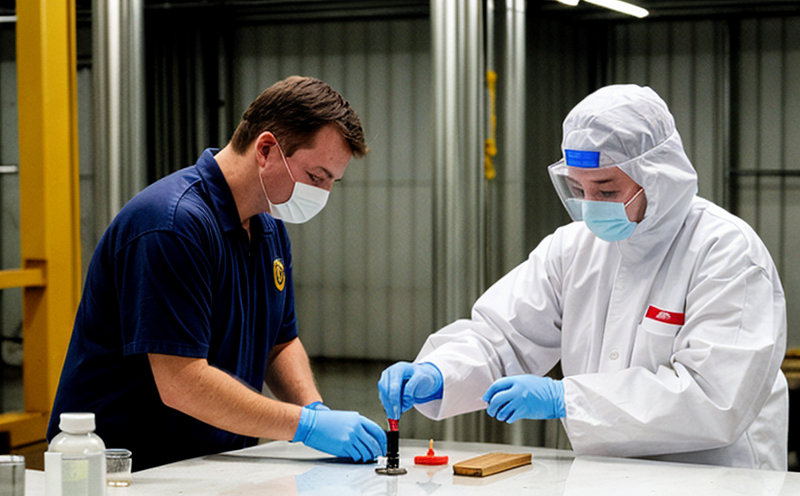ISO 22088-9 Heat Resistance Verification
The ISO 22088 series of standards provides a framework for assessing the heat resistance of packaging materials used in food and beverage industries. Specifically, ISO 22088-9:2017 focuses on the heat resistance verification process, which is crucial for ensuring that packaging materials can withstand high temperatures without compromising safety or integrity.
This service involves a series of tests designed to evaluate how well packaging materials perform under elevated temperatures. The primary goal is to ensure that the material remains intact and maintains its barrier properties, thus protecting the contents from contamination and spoilage during transport and storage conditions.
The testing protocol outlined in ISO 22088-9 is particularly important for industries where temperature excursions are common, such as those involved with perishable goods like dairy products, pharmaceuticals, or any product that requires strict control of its thermal environment. By adhering to these standards, manufacturers can demonstrate compliance and build consumer trust by ensuring their packaging meets the highest safety and quality benchmarks.
The testing process involves subjecting samples of packaging materials to a series of temperature cycles designed to simulate real-world conditions. These tests are conducted in a controlled laboratory setting using specialized equipment that ensures accurate and repeatable results. The specimens are exposed to temperatures ranging from 65°C to 135°C, depending on the specific requirements set by the standard.
During these tests, various parameters are closely monitored, including dimensional stability, mechanical properties (such as tensile strength), barrier integrity, and any potential changes in color or appearance. Additionally, the tests check for any signs of thermal degradation that could indicate a risk to product safety.
The results from this testing process are detailed in comprehensive reports that provide insights into how well the packaging materials perform under heat stress. These reports not only serve as evidence of compliance with international standards but also offer valuable data that can be used to improve future designs and manufacturing processes.
| Test Parameters | Expected Outcomes |
|---|---|
| Dimensional Stability | Maintain original dimensions post-test |
| Mechanical Properties | Retain minimum of 90% of initial tensile strength |
| Barrier Integrity | No detectable increase in permeability after heat exposure |
| Color and Appearance Changes | Moderate changes acceptable, severe changes not allowed |
The process also includes a thorough analysis of the material’s chemical composition to ensure that it does not release harmful substances into the contents under heat stress. This is critical in ensuring compliance with food safety regulations and maintaining consumer health and safety.
In summary, ISO 22088-9 Heat Resistance Verification provides manufacturers with a robust method for assessing their packaging materials' performance under high temperatures. By adhering to this standard, companies can ensure that their products remain safe and intact throughout the supply chain, thereby enhancing both brand reputation and regulatory compliance.
Benefits
- Ensures compliance with international standards for heat resistance verification
- Reduces risks of product contamination or spoilage during transport and storage
- Enhances consumer trust by demonstrating commitment to safety and quality
- Promotes regulatory compliance across different jurisdictions
- Improves packaging design through detailed performance data
- Aids in selecting the most appropriate materials for specific applications
The benefits of ISO 22088-9 Heat Resistance Verification extend beyond mere compliance. It serves as a tool for quality assurance that can significantly enhance product integrity and safety, ultimately leading to increased customer satisfaction and brand loyalty.
International Acceptance and Recognition
The ISO 22088 series of standards has gained widespread acceptance in the global food packaging industry. It is recognized by regulatory bodies worldwide for its rigorous testing protocols, which are designed to ensure that packaging materials meet stringent safety and quality requirements.
Many countries have adopted these standards as part of their national regulations, making compliance with ISO 22088-9 Heat Resistance Verification a crucial step in the supply chain. This recognition ensures that products meeting these standards can be distributed freely across international markets without encountering regulatory barriers.
The acceptance and recognition of this standard also contribute to harmonization efforts among different countries, fostering greater consistency in packaging safety and quality practices globally.
Use Cases and Application Examples
- Dairy Products: Ensuring that packaging maintains its integrity during transportation through hot climates.
- Pharmaceuticals: Protecting medications from heat-induced degradation, ensuring efficacy and safety.
- Poultry and Meat: Safeguarding against spoilage under high temperature conditions during storage and transport.
- Bakery Products: Maintaining freshness and quality in warm environments to extend shelf life.
| Industry Segment | Main Concerns | Solution Provided by ISO 22088-9 |
|---|---|---|
| Dairy Products | Heat-induced bacterial growth, melt issues | Testing for dimensional stability and mechanical properties under heat stress |
| Pharmaceuticals | Drug efficacy compromised by temperature changes | Evaluation of barrier integrity to prevent permeation |
| Poultry and Meat | Risk of spoilage during transport in hot climates | Assessment of thermal degradation effects on packaging |
| Bakery Products | Loss of freshness due to temperature fluctuations | Inspection for color changes and mechanical integrity post-heat exposure |
The use cases highlighted above demonstrate how ISO 22088-9 Heat Resistance Verification plays a vital role in ensuring the safety, quality, and integrity of various food products across different industries.





